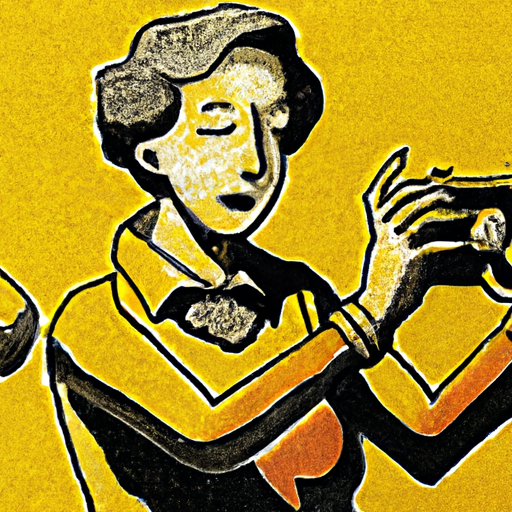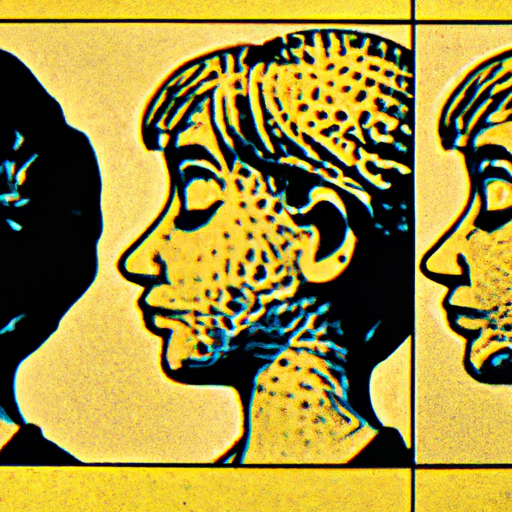
-
Table of Contents
- Incorporating Hand-Drawn Elements in Graphic Design
- The Power of Hand-Drawn Elements
- Examples of Successful Incorporation
- MailChimp
- Dropbox
- Patagonia
- Best Practices for Incorporating Hand-Drawn Elements
- Balance with Digital Elements
- Consistency in Style
- Use Hand-Drawn Elements as Accents
- Case Study: Hand-Drawn Elements in a Magazine Layout
- Statistics on the Impact of Hand-Drawn Elements
- Summary
Incorporating Hand-Drawn Elements in Graphic Design

Graphic design is a constantly evolving field, with designers always seeking new ways to create unique and engaging visuals. One trend that has gained popularity in recent years is the incorporation of hand-drawn elements into digital designs. This article explores the benefits of using hand-drawn elements in graphic design and provides valuable insights on how to effectively incorporate them into your designs.
The Power of Hand-Drawn Elements
Hand-drawn elements add a personal touch to graphic designs, making them stand out in a world saturated with digital imagery. Here are some reasons why incorporating hand-drawn elements can be a game-changer:
- Authenticity: Hand-drawn elements bring a sense of authenticity and uniqueness to designs. In a world dominated by digital perfection, hand-drawn elements can help create a more human connection with the audience.
- Emotional Appeal: Hand-drawn elements have a certain charm and warmth that can evoke emotions in viewers. They can create a nostalgic or whimsical atmosphere, making the design more relatable and memorable.
- Uniqueness: Hand-drawn elements allow designers to create one-of-a-kind visuals that cannot be replicated with digital tools alone. This uniqueness can help brands differentiate themselves in a crowded marketplace.
Examples of Successful Incorporation
Several brands and designers have successfully incorporated hand-drawn elements into their graphic designs. Let’s take a look at some notable examples:
MailChimp
MailChimp, an email marketing platform, is known for its playful and quirky brand identity. They have effectively incorporated hand-drawn elements throughout their website and marketing materials. The hand-drawn illustrations add a sense of fun and approachability, making the brand more relatable to its audience.
Dropbox
Dropbox, a cloud storage service, uses hand-drawn illustrations in their onboarding process. The illustrations guide users through the setup process, making it more engaging and user-friendly. The hand-drawn elements create a sense of ease and simplicity, aligning with Dropbox’s brand values.
Patagonia
Outdoor clothing brand Patagonia incorporates hand-drawn elements in their product packaging and marketing materials. The hand-drawn illustrations of nature and wildlife reflect the brand’s commitment to environmental conservation. These elements create a connection between the brand and its target audience, who are passionate about the outdoors.
Best Practices for Incorporating Hand-Drawn Elements
While incorporating hand-drawn elements can be a powerful design choice, it is important to do it effectively. Here are some best practices to consider:
Balance with Digital Elements
When incorporating hand-drawn elements, it is crucial to strike a balance with digital elements. Combining hand-drawn illustrations with clean and modern typography or digital graphics can create a visually appealing contrast. This balance ensures that the hand-drawn elements enhance the overall design without overwhelming it.
Consistency in Style
Choose a consistent style for your hand-drawn elements to maintain visual coherence throughout your designs. Whether it’s a sketchy and rough style or a more polished and refined look, consistency is key. This consistency helps establish a recognizable brand identity and makes the hand-drawn elements feel intentional rather than random additions.
Use Hand-Drawn Elements as Accents
Hand-drawn elements work best when used as accents rather than the main focus of a design. They can be used to highlight certain elements, add emphasis, or create visual interest. By using hand-drawn elements strategically, you can draw attention to specific areas of your design and guide the viewer’s eye.
Case Study: Hand-Drawn Elements in a Magazine Layout
To illustrate the effectiveness of incorporating hand-drawn elements, let’s consider a case study of a magazine layout. Imagine a lifestyle magazine targeting young adults. By incorporating hand-drawn elements such as doodles, sketches, or hand-lettered titles, the magazine can create a more relatable and engaging reading experience. The hand-drawn elements can be used to highlight key articles, add visual interest to the page, and create a unique brand identity.
Statistics on the Impact of Hand-Drawn Elements
Research has shown that incorporating hand-drawn elements in graphic design can have a positive impact on audience engagement and brand perception. Here are some statistics that highlight the effectiveness of hand-drawn elements:
- According to a study by Adobe, 73% of respondents found hand-drawn elements in designs to be more appealing and memorable.
- In a survey conducted by Nielsen Norman Group, 68% of participants stated that hand-drawn elements made them feel more connected to the brand.
- Research by the Design Management Institute found that brands that incorporate hand-drawn elements in their designs experience a 10% increase in brand preference among consumers.
Summary
Incorporating hand-drawn elements in graphic design can bring authenticity, emotional appeal, and uniqueness to designs. Brands like MailChimp, Dropbox, and Patagonia have successfully used hand-drawn elements to create engaging and memorable visuals. To effectively incorporate hand-drawn elements, it is important to strike a balance with digital elements, maintain consistency in style, and use hand-drawn elements as accents. Research has shown that hand-drawn elements have a positive impact on audience engagement and brand perception. By embracing this trend, designers can create visually appealing designs that stand out in a digital world.
